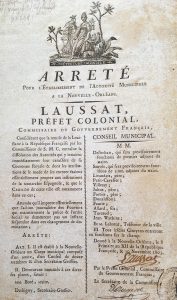March 2018:
March 19-23, 2018:
GDC, Game Developers Conference 2018
San Francisco
The Game Developers conference is considered the largest game industry event in the world. About 29,000 visitors attended GDC conference and exhibition. The attendees were mainly game developers, programmers, game designers, producers and professionals in the game industry. They gathered to find out the latest about development of the interactive games and the future of game industry in virtual reality. There were more than 600 lectures and tutorials on a variety of subjects such as VR and AR space for games, defining market innovations, tech toolbox, visual effect, the thinking process of creating beautiful design, designing interactive narratives on mobile, language ban system, machine learning, the art of microtalks, practical IP law, tech meets art, from game services to production pipeline, math for game programming, character control with neural networks, the visual effects technology, insights from tracking website visitors and experimental gameplay.
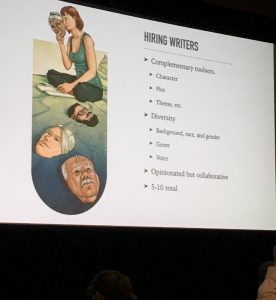
Tom Donnelly in the session the writers room for interactive narrative, discussed how to create the proper kind of narrative for a complex story and how to design the characters. The writer and the designer discussed the process of writing and designing “the walking dead” VR game and its unique requirements. He mentioned that he was an independent screenwriter and explained the walking dead game narrative process in the Writers room. He said: “Many different writers gather together and share their idea and then break a story collectively, this is what the writers room is about.” He added: “To create realistic characters is the goal.”

The designer said: “Discussing the why of the game is the goal of the design.” She discussed timing, budget and scope of each project. Then they talked about the pros and con: “Pros: IP holders and Better predict limitations. The Con: Constrains the writing team.” Analyzing each character: are the characters from NY or southern? The lead writer’s job is managing the room and the writers assistant’s job is taking notes. The speaker emphasized that the writers room should be separate from developers. “Determining Where are the go areas and No go areas is another main function of the lead writers.”
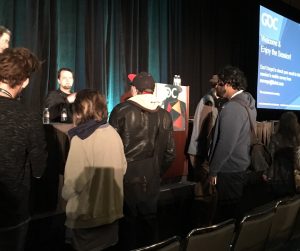
Ryan Woodward from Riot Game discussed the Visual effect of the design, the thinking process of beautiful design. He said: “Don’t become a slave to the canned aesthetics, think it and feel it then make the software serve your mind.” He mentioned that his interests are: Figure drawings & dancing, Effect animation and Use of descriptive language. Ryan Woodward showed a beautiful 2-D animated film directed and animated by himself called: “Thought of You”.
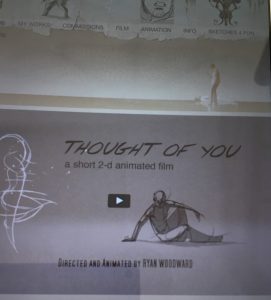
The speaker in Visual effect bootcamp discussed how to use slow motion for showing the dynamics and lighting in the background. He explained the process of Deconstructing visual effects and blocks in the animation. The speakers in the session “Cosmic Top Secret” emphasized using the personal life materials for the game and give it a dramatic structure by demonstrating the difficult emotions especially for the main characters. Andrew Kope, analyst from Canada talked about tracking analysis projects. He gave example of analyzing his personal website. He emphasized web presence importance and said: “HR will Google search during the application and the Clients also do the same.”
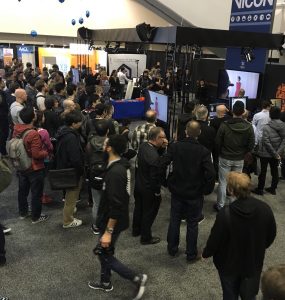
In the exhibition halls a variety of companies from startups to Fortune 500 from different parts of the world presenting their products and services. Microsoft sponsored session discussions on Fluffy Fairy approach to game development and directX: evolving Microsoft graphics platform. Face FX automatically generates gesture animations from audio and enhancing support for English, French, Italian and Spanish.
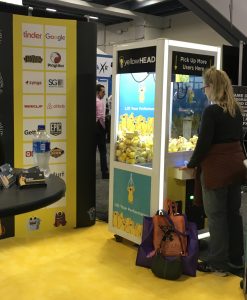
Yellow HEAD’s dashboard blend of datasets from social media networks as well as mobile measurement partners and clients’ BI reports- all integrated into one database. LSU center for Computing & Technology provides training in game animation. Italian Game Industry Association was presenting 12 leading Italian gaming companies. There are over 120 game development studios in Italy. Proxy 42 is pioneering the next generation AR gaming platform. (C) CTR Press
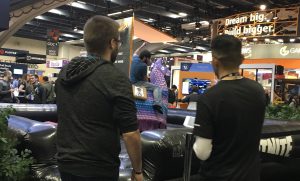
March 19-20, 2018:
Microsoft Tech Summit
San Francisco
Microsoft Tech Summit’s keynote speakers discussed Microsoft 365. They described it as an intelligent solution including mobility and security that empowers the employees to work in a team more creatively and more securely. The speaker emphasized that “Microsoft doesn’t take data to monetize it.” He pointed out that they aim to reinvent their products for the users. He gave an example of producing a movie that requires specialists from a variety countries to be connected by technology and work together and Microsoft facilitates the process: “From routine tasks to creative thinking.”

The speaker pointed out that “Microsoft 365 is an intelligent solution to empower employees to work together more securely and encounter more
sophisticated threats in cybersecurity by nation states. He said: “Intelligent security and using AI for more secure environment is essential and more than 200,000 organizations using Microsoft team.” He added: “the intelligent data keeps the users more secure. Inserting codes in the emails helps all the information stays in the organization.” He explained how AI checking the calendar of all the members of the team and automatically arranging the meetings by using the facial recognition process. He emphasized that integration is for simplicity and it moves window to being a service. He showed some demos of Office deployment projects, AutoPilot Demo, applying security policies on the machine and Contoso. The next speaker emphasized Customer data protection and explained how to keep the attackers out. “Using Advanced threat protection to keep them out.” He said: Looking for the suspicious activities and the signs of breaches need using advanced information on what is going on on the specific endpoint.”
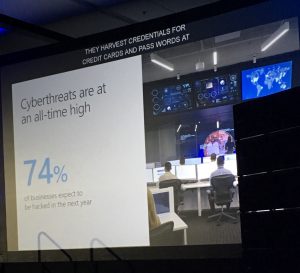
Also there was a variety of workshops and breakout sessions and Microsoft fast track engineers had exclusive cloud architectural discussions with the conference attendees.The speaker discussing Azure said: “90% of Fortune 500 use Microsoft Cloud.” She emphasized reusing the window server and SQL Server licenses that can save 50% vs other cloud providers. She explained Azure functions, Azure Kubernetes Service and Integrated tooling: visual studio developer tools. She discussed Unified management: operations, security and policy. She said: “Trust is gained in a long time and is lost in a second.” (C) CTR Press
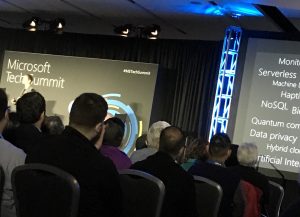
March 16-19, 2018:
Livre Paris
Paris, France
Livre Paris is the largest book event in France that attracts more than 180,000 visitors each year. Academics, writers, translators, professionals from theatre and film industry, publishers, intellectuals, bookstores representatives and book lovers gathered together to find out about the latest in the book industry. There were a variety of professional meetings discussing the book industry; they discussed their latest issues in the trade. In the exhibition area, the representatives of different publishing houses discussed the effects of digitalization on the book industry.

In the themed stages, there were a variety of interviews and performances where the writers, academics, artists and historians from around the world debated the issues related to “writers facing the world.” The professionals in the publishing industry took the stage to present some of their upcoming works. Each highlighted their vitality and creativity in integrating into the global market of the book industry. Christine Montalbetti, a French playwright who teaches at the University of Paris discussed her unique narrative style of engaging the audience. She is the writer of nine books including “Nothing but the waves and winds that has been translated to several languages.

In the session “behind the publishing world” the experts testified on their style of their work. The professionals from Syndicat National de l’Edition discussed the ways of publicizing the scientific knowledge. The literary works by a wide range of writers in different subjects such as economics, essays, memoirs and theatre were discussed. The emphasis was on the human aspects of the retelling the story and how the past behaviors of the characters in the story building their future. Michel Bussi, a French writer of detective stories who teaches geography at the university and his works are the bestsellers discussed his latest works.

The Little Prince by Antoine de Saint-Exupéry, the story of a pilot who forced to crash land in the desert and encountered a little prince visiting the earth from his own small planet was considered a unique work of literature that has captivated the readers for the generations. Antoine de Saint Exupéry was a French writer and aviator. During the Second World War he joined the Free French Forces and he went on a mission to collect information on German troop movements in the Rhône valley on July 31, 1944 and was never seen again. The book “Week end de chasse à la mère”by Genevieve Brisac was another book that was praised by the participants in the book discussions in the exhibition area. (C) CTR Press

February 28 (March 1), 2018:
40th GLOBAL IP CONFEX
San Francisco
Global IP conference brought together the law firm partners, law tech experts and in-house counsel to discuss the operational challenges, litigation, E discovery, risk, the latest law technology and GDPR. The speakers and panelists talked about USPTO’s plans for 2018, the tech enabled IP departments, patent eligibility of software related claims, the future of IP legal department, the future of law professions and technology, E discovery issues, GDPR and privacy by design, cross border IP licensing, IP risks in the cloud, blockchain technology and how to manage E discovery in the complex litigation.
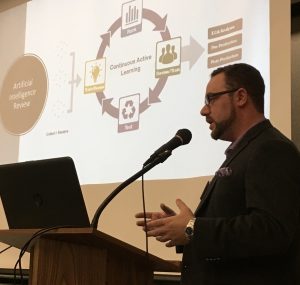
The keynote speaker pointed out that lawyers are afraid of “A word”:automation. He emphasized that the goal would be automating the industry, not the legal profession. Discussing automation he said: “the goal is the smooth transition from legal profession to the legal industry”. Wasserman from D4 discussed human intelligence & AI. He said: “AI reduces the amount of attorneys.” He added: “but robots replacing attorneys is a myth.” He mentioned that another common myth would be putting the eyes on every documents. He discussed traditional attorney review process vs Artificial intelligence review. He said: “AI technology that we are currently working leverages cloud tools and is used for the internal investigation.” He emphasized the need of focusing on building a dynamic workforce and finding solutions for E discovery needs.
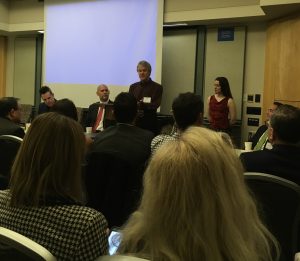
The panel discussing Technology used in IP department talked about collaboration with outside council, technology innovation in the law profession and technology training options for lawyers. The speaker from Microsoft discussed the budget issues of contract databases and IP database. He said: “the scientists don’t like the technology.” He added: “The biggest challenges of the law firms are cutting down the human errors and being early adopter of the platform.” He mentioned that looking at everything fresh would be the solution. “Microsoft contract database scanning the company’s contracts.” The panelists emphasized that “trade secrets protection does need to be automated.” “Creative parts of works that attorneys do cannot be automated but mechanical parts should be automated.”
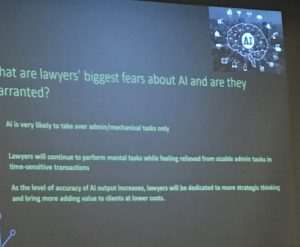
The panelists talking about the future of the lawyers discussed Natural language processing NLP, that concerned with the interactions between computers and human languages and how computers programmed to process natural language data. The speaker discussed whether content analysis empowering the lawyers. Referring to the recent NYTimes article, he said: “Lots of scientists don’t know how their algorithms work.” GDPR panelists pointed out the differences between data controller & data processor. Processing is done on behalf of data controller and data controller “is responsible for collecting data.”

Ben Feldman talked about GDPR and privacy by design. He emphasized the need for building the principles of privacy by design into all the businesses processes. He explained that OneTrust powered by deep privacy research created a platform for the assessment of privacy impacts and data mapping automation. Clement Puiggali from France, representing minesoft, said: “The streamlined operational process is ideal for seamless integration into the daily use by corporations and keeping track of the global patenting activities.” (C)CTR
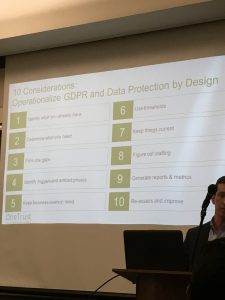
February 2018:
February 23, 2018:
Cybersecurity, Fake News & Policy:
Disinformation And Misinformation
San Francisco
Cybersecurity, Fake News & Policy event was the annual symposium by Hastings Law Journal. Hastings Law Journal has published essays and scholarly articles on a variety of legal topics since 1949. The panels discussed technology, free speech, fake news and democracy after 2016 election. They discussed the 1st Amendment implications involved in technology for curbing fake news. Andrew Bridges, a partner at Fenwick & West talked about how technology impacts fake news. He described the roles of the Gatekeepers of the culture. Talking about Automation he mentioned that some argue that it is not to be blamed but the people behind it and how it is used. “The hammer shouldn’t be blamed but the people who did the murder.” He pointed out that Technical fix is an illusion. He emphasized lowering the speed of reading the news: “Lower the speed, read the article, not just the headline and think about it.” He said: “Learn to challenge your friends. Find the fake news even if it feels good.” He mentioned that the solution “is celebrating the good instead of celebrating the bad.” He explained how the ideas are formed in the churches, country clubs, gated communities and universities. He emphasized the necessity of getting out of the bubbles and educating ourselves. He said: “People believe what other people say, especially if they think those people are smart.” Tessa Jolls emphasized objectivity. She said: “You see a movie with your friend; you have a completely different understanding. People are subjective.” She pointed out that always be skeptical about media messages. She said: “Be independent thinker and avoid labeling other people.”
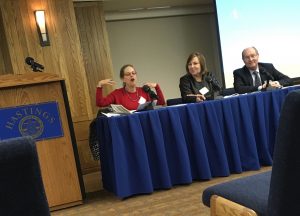
Jill Bronfman gave some examples of how persuasive fake news can be. She mentioned that at the University of Oxford, there was a picture of Hitler with a skirt, claiming that Hitler was a woman! She discussed the fake news formation and how people believe that. Public Policy Manager from Facebook discussed Facebook’s initiative to stop fake news. She said: “There are 2.2 billion active users of Facebook in dozens of languages. And 85% of them are outside of the US.” She added: “We regularly survey people on the Facebook. Authentic communication is the cornerstone.” She explained how they categorizing the pages and those posts that regularly hidden by the users help them to find the unauthentic contents. She mentioned that for strengthening ties between Facebook and news companies they met with 2000 publishers in the world. She described fake news as news shared with the intention to deceive. She mentioned that they had changed Newsfeed algorithm and added that links to the news articles will be sent to the Fact Checkers. She emphasized “Facebook as a borderless product.”
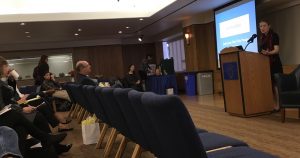
The panel discussing 2016 election talked about public policy side of the fake news, government regulations and congressional response to the fake news problem. The speaker mentioned that hackers didn’t hack Facebook they just used its targeting tools that reach the right people at the right time they wanted. They discussed the danger of cheap IoT devices and how internet allows the criminals to hide their identity. They explained how bots are used for amplifying opinions that shows the idea supported by hundred thousands of people and how bots falsely generate followers for the social media. “A selfie can be turned into a video by hackers.” They gave some examples of Economic hacking by China in the US. They emphasized the necessity of media literacy education. In some countries such as France and Italy media literacy is a part of curriculum at the schools. The media literacy educators provide a set of cultural contents integrated to other subjects for connecting media literacy with digital learning. The emphasis is on the critical thinking and continuously questioning and challenging the contents.(C)CTR Press

February 20, 2018:
Cloud & Big Data: The Future of Security
San Francisco
Cloud & Big Data event was organized by Carbon Black and its Partner, VMware. Carbon Black is a provider of next generation endpoint security. It has pioneered application control, EDR and NGAV in endpoint security categories. Global cybersecurity, hunting threats, replacing legacy antivirus, big data & the cloud, how to move security to the cloud, transforming security in the virtualized datacenter, cloud based endpoint security and the power of big data were discussed.
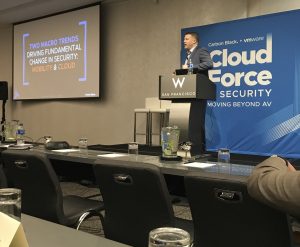
The Keynote speaker talked about how Big data and the cloud are transforming endpoint security. Tom Kellermann started his presentation with talking about French strategies during World War II against Nazi Germany and terminated his talk with a quote from French writer, Victor Hugo. He mentioned that Centralizing data and analytics creating a strong platform to predict the threats and hunting them and transforming the endpoint into a continuous threat monitoring. He explained kill chain’s evolution and Next generation cyber security. He explained what we can learn from the attackers: “The endpoint is the attacker’s most valuable asset.” “Their attacks have multiple stages.” The next speaker, Gomez discussed Network behavior and biggest challenges in building programs: Building threat hunting programs. He also talked about Friction between IT operations and security operations. He said: “Chinese hackers changing their strategies all the time and it is difficult to block them; they change IP constantly.”

The next speaker Chris Corde talked about transforming security in the virtualized datacenter. He mentioned that biggest obstacle may be the architectural gap between the apps and data. He explained Building defense and seeing good data, Network for decentralized communication patterns and Different protection profiles in data center. He said: “They are moving faster and faster you have to manage infrastructure at scale.” He discussed how to handle different threat models, Better signal to noise ratio and IP address collision. He emphasized the two months security reviews and finding out what to secure. He explained Operating at DevOps speed and the required model: how to build, review and deploy. He pointed out that Cyber Hygiene, Building more hygienic environment is essential. “Capture, detect and respond for protecting applications running in visualized and cloud environments.” Tristan Morris led the audience through a hands on introduction to the endpoint detection, prevention and response technology Cb Defense and bettering security posture through continual visibility. (C) CTR Press

February 12, 2018:
Technology Innovation and Human Genomics Symposium
Palo Alto
Technology Innovation and Human Genomics Symposium was organized by Beckman Center, Stanford University. The speakers were mainly academics from Stanford University, MIT and University of Washington. They discussed the impact of technology on biology, theory and big data in genomics, DNA sequencing in human genetics and cancer genomics, human genetic data, lossy compression of genomic data and the result and precision medicine.

Tech companies such as Google, Facebook and Microsoft working on projects in genomics and collaborating with academics for more agile, easier manageable approaches, reducing the cost and complexities and achieving local compliance in the cloud. Gabriel from Board Institute, the MIT and Harvard that are among the biggest producers of human genetic data discussed optimizing new technologies and analysis tools in genomics platform. She talked about using genomics techniques for better understanding of the genetic components of diseases. She explained the recent projects in Heart, Lung and Blood Institute Exome Sequencing. She analyzed characterization of DNA sequencing, Gene hunting in an isolated population, Common human variation in genome and Coding region of genome and non coding region of genome. She mentioned that currently they sequence 100,000 genomes per year.
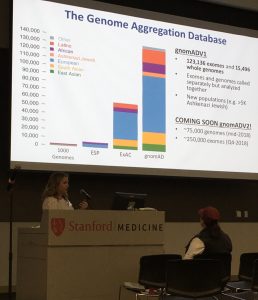
The next speaker, Rivas from Stanford University discussed human genetic data and Big data problem. He said: “Cloud based data platform has solved many problems but security issue is still a big problem.” He discussed the challenges of genetic data aggregation: difficulties of moving data and objections to data sharing. The speaker discussed Finland, Iceland and UK Biobank in Oxford university and Massive datasets millions of individuals. He suggested that going from big data to small data can avoid the problems. He explained Human knockout that protects against asthma and Genetic variants that protect against human diseases. He said: “human knockouts are Hidden genetic gems that protect against diseases.” Gene knockout is permanent deactivating of a gene through genetic engineering. Gene knockdown are when genes are suppressed rather than deleted. It includes gene silencing and gene editing. Sequencing determines all the letters in a DNA sequence and as the result can reveal the mutations.

Some academics have expressed their concerns about ethical issues of genome editing modifications; they published their article on Nature journal reasoning that genome editing using current technologies may have unpredictable effects on the future generations. They emphasized the danger of non therapeutic modifications.(C) CTR Press
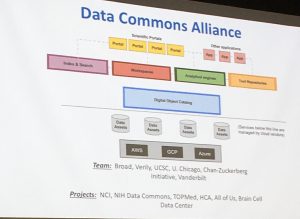
February 3-7, 2018:
Developer Week 2018
San Francisco Bay Area
Developer Week conference’s spotlight was on new technologies such as webRTC, Node.js, HTML 5, Data science, Full Stack JavaScript development and distributed computing. There was a variety of workshops on Blockchain, artificial intelligence, machine learning and deep learning. The speakers discussed live video and AR, containers and microservices, scaling technology, age of quantum computing and artificial intelligence for the enterprise developers. The keynote speaker discussed the full power of Quantum. He anticipated that in 10 years time, quantum computer will be used extensively. He talked about Quantum computer VS conventional computer. In quantum computers, information storage is quantum bit based but in conventional computer it is bit based. The circuit behavior in quantum computer is governed by quantum mechanics but in conventional computer it is governed by classical physics. Quantum computer is very high speed.
The next speaker discussed how to build maps for larger algorithms and
machine learning.
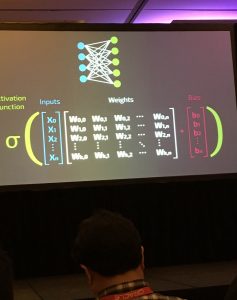
In Artificial intelligence workshop, Hurbans discussed using
the model of neuron networks for building algorithms. He explained how they work in computers and algorithms. He pointed out that massive data is used for training a model and machine learning. He explained how data is converted to the common format and then compared and manipulated consistently. He talked about the process of Input, hidden factors and output and using neural networks as mathematical expressions. He explained how hidden layers and bias used in Mathematical expressions, Calculating costs and using Peyton base programming language in the process. The speaker also discussed the activation functions on each recurrent neural network that can be used in voice recognition and generating music. He said that reliability is an issue especially in self driving cars that lack safety.

In Convolutional Neural Network (vision) workshop, Nixon and Earle from Microsoft discussed the problem of vision. They discussed how vision processing can be available to developers, apps and enterprises. They talked about AI and Machine learning. The speaker said: “in AI, you give input and receive output ; it is static. Machine learning is getting better over time.” He added: “Deep learning is possible because of computing powers.”
He talked about Massive data center in deep learning. He said: “we say we want a yellow bird on the branch and we see how it is painted by deep learning algorithms. The program imitates the human mind.”
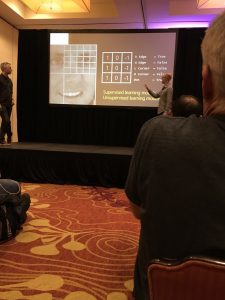
The speaker also talked about Quantum computing and finding instantaneously the names of the people in the crowd. He added: “Fully functional quantum computers will be built in the next five years.” He talked about Neural network and analyzing the data by supervised learning models. He also emphasized that computer gives us the percentage of likelihood that we cannot trust. He showed a picture that computer mistaken a dog for a muffin. The next speakers talked about artificial intelligence open source libraries, self driving cars and AI for advertising and Ecommerce. (C) CTR Press

January 27- February 1, 2018:
SPIE, Photonics West
San Francisco
SPIE, Photonics West was organized by SPIE, the international society for optics and Photonics. It was founded in 1955 with the goal of advancing light based technologies. It publishes the SPIE digital library that contains about 500,000 research papers from the Society’s scholarly journals; it also publishes a wide variety of open access contents. During the conference and exhibitions, there were more than seventy courses and workshops on Photonics therapeutics, Neurophotonics and optogenetics, Laser-Tissue interaction, Laser sources, Nonlinear optics and beam guiding, Photonics integration, Semiconductor lasers and LEDs, imaging, optical materials and fabrication.

SPIE Brain discussions highlighted the development of innovative technologies that help us to understand the brain functions. The talks were chaired by David Boas from Boston university and Rafael Yuste from Columbia university. Photobiomodulation for the brain, adaptive micro endoscopy using liquid crystal lenses, investigation of vascular scattering patterns in retinal and choroid also OCT, non invasive therapy for traumatic brain injuries, long term imaging of living brain glial cancer cells, Alzheimer’s disease: evaluation using label free fluorescence, drilling progress of deep holes in tool steel, long fiber based multi channel NIRS system, three channel whole brain optical imaging for visualizing dual labeled inputs and outputs, and mapping the quantitative cytoarchitecture of the mouse brain by light sheet microscopy were discussed.
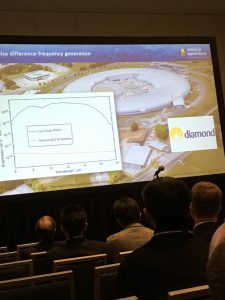
The panels and speakers discussed the latest research on laser manufacturing, laser material processing, diode, semiconductor lasers and 3D fabrication technologies. Power balance on a multi beam laser, laser material characterization, nonlinear pulse compression, Photonic crystal technology for compact fiber delivered high power ultra fast fiber laser, high power diode laser technology, laser direct writing, laser induced modification of glasses and 2D materials fabrication were discussed by the speakers. Jean Philippe Lavoie talked about basics of laser material processing. He explained what happens when a laser beam hits a material and the optimization of the process.

The speakers on Optics explained the dominant role of optics in medical imaging. The speaker explained that the type of optical devices used physicians varies and gastroenterology and surgery have the most specialized optical devices. Robinson from MIT discussed Data delivery,
DTE : direct to earth pros and cons, Optical communications ranges and rates, Deploying all of the world, Potential future applications and Agreement between NASA and other countries. The next speaker talked about Facebook that is developing new methods for delivering the net by using lasers, drones and AI softwares: data that travels by lasers, sent to Earth from drones. After Facebook received an open letter by digital rights groups from 32 countries saying: “internet dot org violates the principles of net neutrality, threatening freedom of expression and privacy”, it changes its name to free Basics.
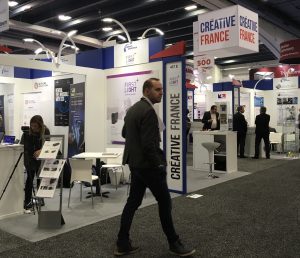
In the exhibition hall, the representative of First Light company from France, explained that they combine extreme sensitivity and high speed for both visible and infrared spectra. First Light Imaging is recognized for high quality medical imagery. Tempo, an American company from California provides clean room compatible foam and optics packaging; It’s booth was considered the most environmentally friendly in the exhibition. (C) CTR Press
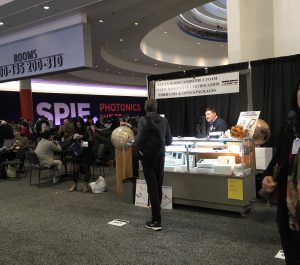
January 2018
January 21-23, 2018:
Fancy Food Show
San Francisco
Fancy Food Show as the premier speciality Food Show on the west coast attracted international food experts, exhibitors and visitors to gather and discover the latest in specialty foods. The main focus was on buyers and sellers of the speciality foods and there were some opportunities for entrepreneurs looking to start a new business in Food industry and investment. There were a variety of education sessions and talks. Donnan discussed the vacuum of information and trust. He emphasized the importance of authenticity and providing healthy and nutritious products. The panel talked about selling speciality foods and what’s driving sales in different channels and the future of food. And the next speaker emphasized supporting local producers especially if we live in a product rich area of the country.


In Front Burner Foodservice Pitch Competition, three exhibitor contestants competed to be selected as the winner with the most potential achievement in food industry. The process was controversial and some members of audience disagreed with the judgment and even at one point they booed the judges. Daron Fitch emphasized on Non GMO and organic products. He presented Modena Pearls of balsamic vinegar. The second contestant, Gerard Bozoghlian also emphasized healthy and Non GMO products and presented Chimichurri Autentico. The last contestant, Agrawal presented achaar from India. Those who tasted all three products scored achaar the lowest, but the judges chose it as the winning product. The audience didn’t have the chance to taste them and compare. One judge expressed his concern about the health issues of spicy achaar. Leibowitz talked about Marin Carbon project and how they managed carbon farming system.


In the exhibition hall, Kapiti from New Zealand introduced Kikorangi blue cheese. The representative said: “There is no genetically modified grasses in New Zealand and there is no artificial growth hormones in the milk.” Routes de TERRE, French truffles from off the beaten track have amazing taste. Lemon Plus squeezed and bottled in Sicily, Italy lasting since five generations. Ines Rosales from Seville, Spain has a unique taste. Le Bon Magot is a unique entry in speciality food industry. Pajama Sweets presented pistachio brittles, tasty Persian Sohan. Franco Agro Negocios founded in 2003 in northern Mexico exhibited sun dried herbs and fruits.


Milk Boy Swiss chocolate extra dark, 85% Cocoa has a delicious taste. Tea & Coffee Edinburgh company from Scotland presented roasted beans from Costa Rica and Columbia. Roland exhibited organic white wine vinegar with the Mother; it has golden color and robust acidic taste. Sahar Khiz presenting tea with the legend of Persian Saffron. Villa Vainilla producing pure Mexican vanilla extract. Hermès Tarim from Turkey exhibiting aromatic dried bay leaves. Lorenzo extra virgin olive oil from Italy has a distinctive fruity aroma. Sal de Añana Añanako Gatza from Basque Country presenting its latest products. Redmond Trading company representative talked about sea salt in Utah and how the salt settled at the bottom of the sea pushed up near the surface close to the town of Redmond, Utah. (C)CTR Press

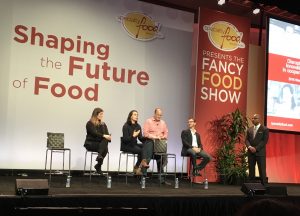
January 15-16, 2018:
World Crypto Economic Forum 2018
San Francisco
World Crypto Economic Forum was the first of a series of events to support the Blockchain economy and the goal was creating a global network of developers and entrepreneurs. The panels and speakers discussed Blockchain and token ecosystem, decentralized and autonomous governance, transforming economy and society, Crypto macroeconomics, tokenomics, bitcoin and crypto investment, legal aspect of token sale, emerging technologies in Blockchain industry and tokenizing real world assets.
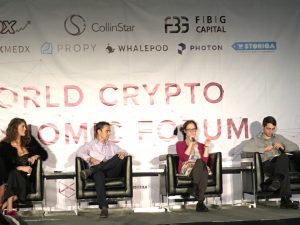
Bitcoin is a digital currency that enables anonymous and bank free transactions. The idea of Blockchain could change the world. Smart contracts in Blockchain are executed by small computer programs. Blockchain is a decentralized digital ledger for recording transactions across computers and these records cannot be altered without altering all subsequent blocks in the network. Each computer connected to the network gets a copy of the Blockchain automatically. A block records the recent transactions and when it is completed, it goes into the Blockchain as a permanent database. The transactions cannot be deleted and the blocks added through cryptography. Bitcoin is not regulated by a central authority and is decentralized. Each node receiving a copy of the Blockchain. The speaker discussing open source money started his presentation with this sentence: “I love Crypto as you love your kids!” He emphasized that the future would be the smart money. He added:”Note is dumb money, Bitcoin is smart money.”

Josh Fraser talked about maximizing personal liberty by blockchain and reducing censorship and unfair regulatory practices. He discussed Decentralized marketplace by blockchain. Another speaker in the panel, Marshall Hayner said: “let’s make the world that money works for us, not us working for money.” Then panel discussed the advantages and disadvantages of decentralization. Security and privacy issues were discussed. In 2015, hackers stole $75 million worth of bitcoin at a cryptocurrency exchange. The speaker said: “Hackers stole more than 1 million dollars in the smart contracts.” Casserly said: “Nations are not creating wealth they are creating debt; we are borrowing money faster than we create wealth.”
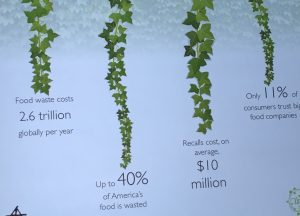
The speakers emphasized decentralization. In a Centralized system, decision making is in a few hands, but in a decentralized system, the decision making process is at all level. Cosman discussed Tokenization benefits, Network effects, investment worldwide and liquidity premiums. He pointed out that It can be traded on a global liquid exchange. The next speaker discussed Blockchain and food. He said: “Blockchain technology is coming into the food supply chain.” He added: “Chemical preservation process of food and other information can be available in Blockchain.” He discussed Monetizing food data. The cost of moving information with the products is high. “Companies want to connect Blockchain with the information about the food and smart menu.” Then the vice panel talked about using bitcoin in gambling, weed and adult industry for the transactions. Because they don’t want the trace of the transactions in their bank or their credit cards records.
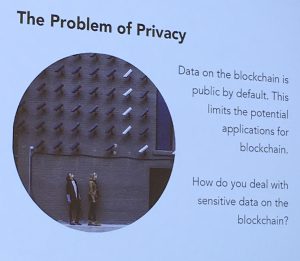
Cryptocurrency is still controversial; some funneling their money into it and believe that it is the future and on other hand some call it fraud. Warren Buffett once said: “cryptocurrency will come to a bad end.” Mike Slinn talked about polyglot ethereum, Multi computer languages, Producing business values and Developing libraries and frameworks. He mentioned that more information on Multiple polyglot shells is found on mslinn GitHub. Ethereum has its own currency: Ether. Those who believe in Blockchain platforms such as Ethereum argue that network of distributed trust will have a significant future. Some people such as Fred Wilson who was an early advocate of the Blockchain are against I.C.O.s and calling them all “scams”.
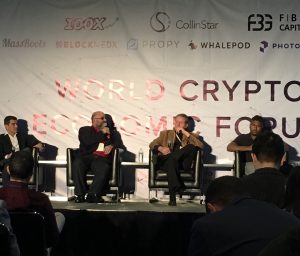
Some critics are worried about the problems of identity and privacy. They argue: “ Amazon has your purchase history, Facebook knows your friends, Equifax has your credit history. When you use any of these they can sell these information to the advertisers without your permission. It also can be applied to Blockchain’s architecture once it finds a wider audience.” Also the fraud weakness is where “physical space users interact with cyberspace Blockchain.” Fabio Zoffi discussed hypersmart contracts. He talked about how turning AI and Blockchain into cash. In the exhibition hall, a variety of startups exhibiting their products and services. Vault bank investment exchange and wallet intends to be the first securities compliant platform that performs KYC and Accreditation. (C) CTR Press
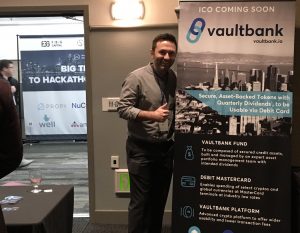
January 4-6, 2018:
Global Law Conference
Paris, France
The conference was organized by CLE Paris. Law educators, lawyers and legal professionals from a variety of countries gathered to discuss globally and technologically diverse legal services and law systems and the recent changes. The speakers from Université Panthéon Sorbonne and Université Paris 13 discussed the Civil Code from Napoleon to the 21st century. Napoleon after the second Italian campaign seeking to draw up a code of laws involved two jurists specializing in common law. Napoleon was the chair in the sittings of the conseil d’Etat started in 1801 that two legal styles, common and written were discussed. Napoleon Code made civil law more accessible and was considered a modern civil law system. Napoleon Code required judicial interpretation and the judges were prohibited from judging a case based on a general law creation. It influenced the legal system across the globe. The Italian Civil Code of 1865 and Louisiana’s Civil Code derived from Napoleon Code. On March 21, 1804 Napoleon presented a new legal code. In 1807, it became known as the Code Napoleon. It’s clarity made it a legal model for numerous nations to adopt. Despite many changes, the code remains in effect in France and it guarantees freedom of religion and equality before the law.

The next speakers discussed the law regarding forgeries and counterfeiting in creative art. They talked about the case studies and the extent of efforts were made to verify the authenticity of the works of art that were forgeries. In one case, Howard sued Knoedler after purchasing a forged work of art in another case was Freedman purchasing forged works of art and they discussed how different cases were settled in court or outside the court. In France and Italy buying counterfeit goods is illegal and the violators can face fine or even jail term. There are three ways: authorities and experts that decide on authenticity, authentication board and finally the catalogue raisonné that is prepared by experts or the authentication board. Other panels discussed legal professionals roles in detoxing social networks, the Common European asylum system, globalization, legal education and technology in legal system. (C) CTR Press
